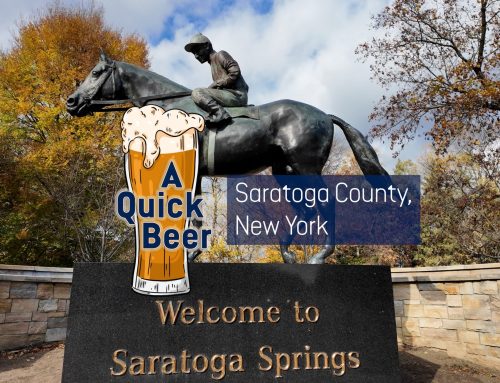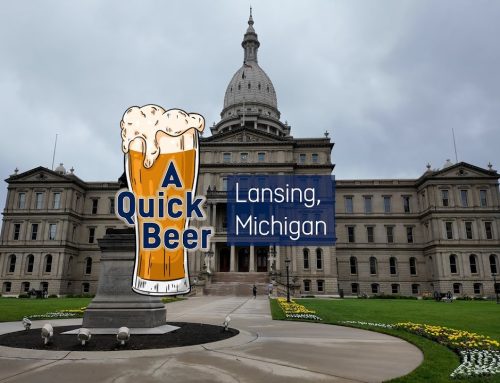Author
Dennis
Share
Recently I came across a picture of a few cans from Old Flame Brewing for their Blonde, Red, and Brunette, and the comment accompanying the picture asked people what their ‘favourite’ was. Most replies to the question all played along – participating in the obvious underlying theme in the designs. If you go on Old Flame’s website (http://oldflamebrewingco.ca/#AboutTheBrands) you’ll see that they also have a ‘Dirty Blonde’. It should be noted that not all of Old Flame’s branding follows this theme as they do have other names that simply play on the notion of strained relationships (which I think is somewhat original). When I saw the picture, I was curious whether other people had similar questions to mine – that is, are they crossing a line?
Given my non-confrontational manner I wasn’t quite sure how to go about addressing this question, so I sat on this for a bit and gave it some thought – which led me back to university. While majoring in sociology I learned the principles contained in the idea of teaching controversy: that is, when approaching topics such as sexism it is integral to do so in a way that encourages open dialogue. Often our instincts are to attack, resulting in defensive and anger-filled reactions that impede any potential for ‘unlearning’ (I say unlearning because sexism is learned through interaction – knowledge is constructed by us about us). I think sometimes this instinct to attack also happens in our everyday lives – we witness something we feel is sexist and lash-out rather than engage in an honest conversation, and this is a missed opportunity for us. I’m saying this because I want this to be an invitation to engage in an honest conversation about sexism and beer; I don’t want this to be about finger-pointing.
Given this, the Blonde, Red, Brunette, and the Dirty Blonde caught my attention because they utilize a common mechanism – images of females are reduced to attributes associated with preferences in beauty and organized by these associations, and the cans are then sold and purchased as commodities. Yes, the labels are elegantly designed but they are also a pretty clear example of objectification; the type of objectification that exists within the dichotomy of subject and object. That is, in a male-centric culture the subject is typically the male and its possession, the object void of volition, is the female.
To be fair, Old Flame is not utilizing extreme sexual objectification: the labels are not violent and they don’t have ‘rapey’ undertones. There are certainly worse examples out there – e.g. Pig Minds’ PD California Ale or Le Corsaire’s La Tite Pute (which has since been renamed). When compared to these examples, it is clear Old Flame’s branding is definitely on the milder side of the spectrum – but does that make it okay? Shouldn’t the goal be to avoid being on this spectrum? Is the spectrum not all born out of the same misogynist and sexist discourse?
When I contacted Old Flame they replied that they had not received any criticism or push-back to the labels and that the branding is supposed to have a “very playful and respectful tone.” And this brings up a question that needs to be explored: is it possible for this type of branding to be playful and respectful? In the more extreme cases the answer is obviously no – with Old Flame I’m not sure what the answer is and my hope is that this piece will lead to a good conversation exploring this issue.
As I discussed this with different people I received some very good questions. First, is there anything inherently bad about using an image of a female on a label? No, but execution is critical. In the case of Old Flame I think the use of objectification in the design and naming conventions, effectively removing personality and agency, has the potential to lead to some very sleazy conversations. Which leads to another question – whose responsibility is it?
To borrow an example, if I place two melons on a counter and a group of men see the melons and start objectifying women, is that my fault? No; and Old Flame can’t control the type of conversations their branding elicits. That being said, they also can’t claim to be unaware of the industry they are in – and although I am completely guessing here, someone at Old Flame had to have known what types of conversations their branding could start. And even if they didn’t? Going back to the melons, if I hear the conversation those men are having do I walk away or do I remove the melons? So yes, perhaps I do expect Old Flame to take some responsibility for what they put out there – even if their intentions were not explicitly sexist.
Normally when thinking about sexism and beer branding we think of historical examples or of certain big breweries and their outdated advertising, but as witnessed with many beer labels that are adorned with passive female figures or ‘witty’ names, perhaps beer culture hasn’t evolved as far as some of us would like. How does beer branding that perpetuates and contributes to a social discourse of female objectification continue to exist? Why do some breweries continue to make these branding choices? Is it because beer as a category is mostly populated by men (as producers and consumers)? Is this why we accept justification/reasoning such as ‘it’s just light-hearted fun’? If this is the case it speaks to a very serious issue – that despite claimed progress in equality, when left on our own, boys will still be boys. Or is this simply a lack of creativity which results in the reliance on old formulas and approaches (which doesn’t make it okay) – if this is the case, well then that’s just lazy.
There’s also the issue of assuming that just because a female deems potentially-offensive branding as okay, it gives the brewery a free-pass. Firstly, all females do not think/feel/react the same way. I showed the Old Flame branding to many female colleagues and friends – some thought it crossed a line and some didn’t – not that I needed to qualify this statement. Secondly, this isn’t about offending females; it is about progress. If it is only females that are concerned about sexism we are further behind in our thinking than we like to portray. This is where I think it becomes very important that these topics are discussed in the most open way possible. The point can’t be to ‘call out’ those brands who you feel are being sexist; the point has to be to engage them in a conversation about their branding choices. I don’t want a brewery to change their branding because it offends someone – I want them to change it because they genuinely believe that it needs to be changed, and that this new thinking becomes a part of their ethos as a business. That is progress through unlearning.
Which brings me back to the Old Flame branding…I don’t think their actions were sexist when they decided to go with these labels but their intentions don’t necessarily matter. How these labels will be perceived and whether they will perpetuate a sexist culture that makes it okay to objectify and de-value women matters. Although the intent might not be there (and I truly believe that it wasn’t), I think we should all take responsibility for what we contribute because it is important – knowledge is constructed by us about us. The other reason I brought Old Flame into this discussion is, as noted earlier, their branding is not absurdly over the top – so hopefully the conversation won’t become too heated and we can have a worthwhile dialogue about this. I really do want this to be a conversation because I am still working through my reactions, and I realize the issue might not a simple one to tackle, and I am curious to hear what others including Old Flame think.
You can follow Dennis on Twitter and Instagram or send him an email at theipamyth@gmail.com
Cover Photo by Sean Atkinson



